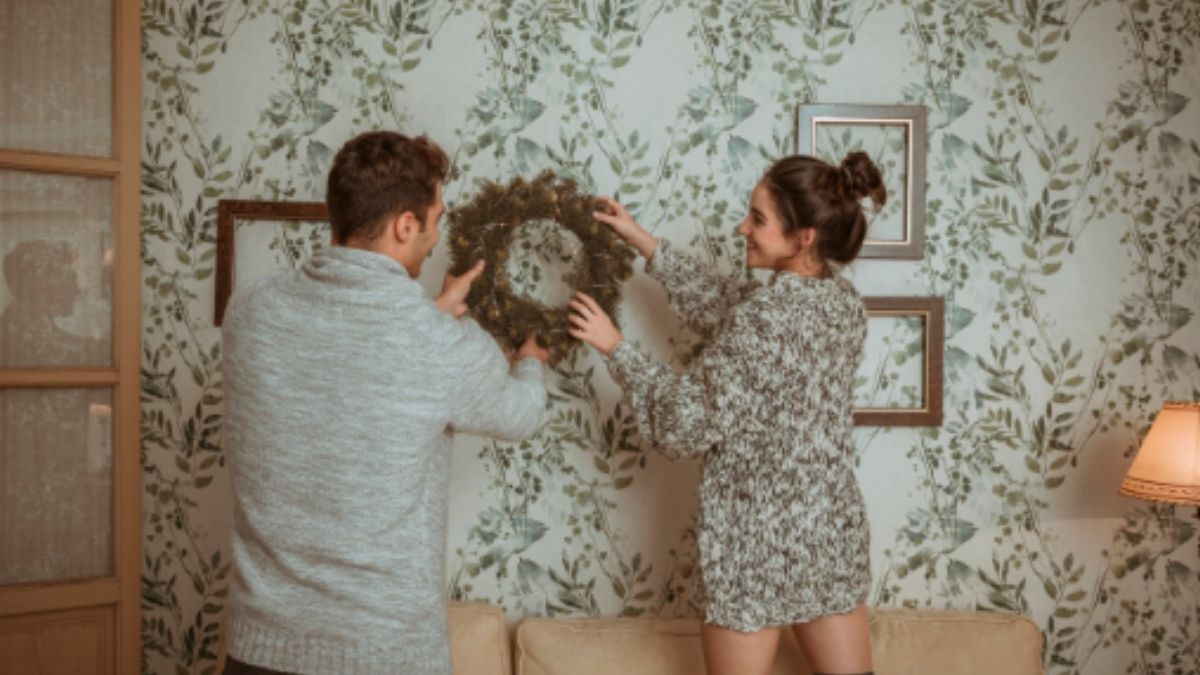There’s something magical about a room with a statement wall. Whether it’s bold, moody, textured, or playful, the right wallpaper can turn a plain space into something truly memorable. If you’re looking to refresh your interior without committing to a full-scale renovation, creating a feature wall with wallpaper is one of the most impactful—and accessible—design moves you can make.
Statement walls aren’t just for trend-forward interiors. With the right wallpaper, they can suit every style—from minimalist and Scandinavian to boho, vintage, or modern glam. In this guide, we’ll explore how to choose, place, and style a wallpaper statement wall that truly wows.
What Is a Statement Wall?
A statement wall (sometimes called an accent wall) is a single wall in a room that’s visually distinct from the others. It stands out through color, pattern, texture, or material. When done right, it becomes the room’s focal point—a place where the eye naturally lands when you walk in.
Wallpaper is one of the most effective ways to create a statement wall because of its variety. From oversized florals to metallic geometrics, soft watercolors to textured grasscloth, wallpaper offers endless options to express your personality and set the tone of a space.
Step 1: Choose the Right Wall
Not every wall is made to be a statement. The key is selecting one that naturally draws attention, such as:
- The wall behind your bed in the bedroom
- The fireplace wall in a living room
- The wall facing the room’s entry point
- The end wall of a hallway
- The wall behind a dining table or sofa
Avoid walls that are broken up by too many doors or windows, as these interrupt the visual flow and reduce impact. You want a solid expanse where your wallpaper can shine uninterrupted.
Step 2: Define the Mood
Before picking a pattern, think about the mood you want to create. A statement wall sets the emotional tone for the room, so be intentional.
- For calm and serenity, consider soft botanicals, subtle stripes, or muted tones.
- For energy and drama, look at bold graphics, vibrant florals, or rich, moody colors.
- For elegance, try metallic accents, Art Deco patterns, or intricate damask designs.
- For playfulness, consider whimsical illustrations or abstract prints.
The wallpaper you choose should complement—not compete with—your existing decor. If your furniture is already bold, consider a more neutral or textured wallpaper. If your space is minimal, a lively or artistic wallpaper can add the perfect visual punch.
Step 3: Don’t Be Afraid of Texture
Pattern isn’t the only way to make a statement. Texture can be equally powerful. Textured wallpapers offer depth, sophistication, and a tactile quality that paint simply can’t replicate.
Consider texture wallpaper for walls if you want to create a subtle yet impactful feature. Think linen-effect finishes, grasscloth, embossed patterns, wood-look wallpapers, or even leather-inspired designs. These bring dimension and warmth to your space and work particularly well in living rooms, dining rooms, and bedrooms.
Textured wallpaper is also great for toning down bold prints or colors, offering a middle ground between drama and refinement.
Step 4: Balance with the Rest of the Room
A statement wall shouldn’t exist in a vacuum. It needs to work with the other elements of the space to create balance.
Here are a few tips:
- Echo the wallpaper’s colors elsewhere—use pillows, rugs, or art that pick up on tones from the wallpaper.
- Mix patterns with care—if your wallpaper is bold, opt for more subdued or solid-colored fabrics and furniture.
- Use lighting strategically—a feature wall under a spotlight, pendant, or well-placed lamp can become even more striking.
- Avoid clutter—let the wallpaper breathe. Don’t crowd the wall with too many shelves or decorations that might compete with the design.
Step 5: Think Beyond the Living Room
Statement walls aren’t just for main living spaces. In fact, they can be even more impactful in small or unexpected areas.
Try wallpaper in:
- Powder rooms: Add surprise and charm with bold wallpaper in a small space.
- Entryways or hallways: Make a memorable first impression.
- Home offices: Define a workspace with a pattern that inspires focus or creativity.
- Kids’ rooms: Choose playful, colorful designs to reflect personality and imagination.
In these spaces, even just one roll of wallpaper can completely transform the mood.
Step 6: Don’t Skip the Details
Once the wallpaper is up, it’s the small finishing touches that elevate the entire wall.
- Frame it: Use architectural molding or painted borders to visually “frame” your wallpaper and give it a custom, designer look.
- Add furniture thoughtfully: Let the statement wall be the star. A neutral console, headboard, or sofa in front of it can enhance the effect without stealing the spotlight.
- Incorporate art sparingly: If you want to hang artwork over your wallpaper, choose pieces with simple lines or minimalist frames that don’t compete with the background.
Even mirrors can look stunning over patterned wallpaper, especially when paired with good lighting to reflect both the light and the design.
Step 7: Try Temporary Options
Not ready for a permanent change? Removable wallpapers are perfect for renters or anyone wanting to experiment. These peel-and-stick designs offer the same visual impact without the commitment, and they’re easier to install than traditional wallpaper.
Many brands now offer beautiful temporary options that don’t sacrifice style. This is a great way to test your love for a bold print before fully investing.
Final Thoughts
Wallpaper has come a long way from its dated reputation. Today, it’s one of the most versatile and design-forward tools for transforming a room—and nothing proves that more than a statement wall.
Whether you’re going bold with a colorful mural, subtle with texture wallpaper for walls, or elegant with a metallic print, a wallpapered feature wall adds personality, drama, and polish. It invites curiosity, tells a story, and shows that you’ve put thought into your space.
So if you’re craving change but aren’t ready for a full makeover, start with one wall. Let it speak. Let it surprise. And most importantly—make it yours.











